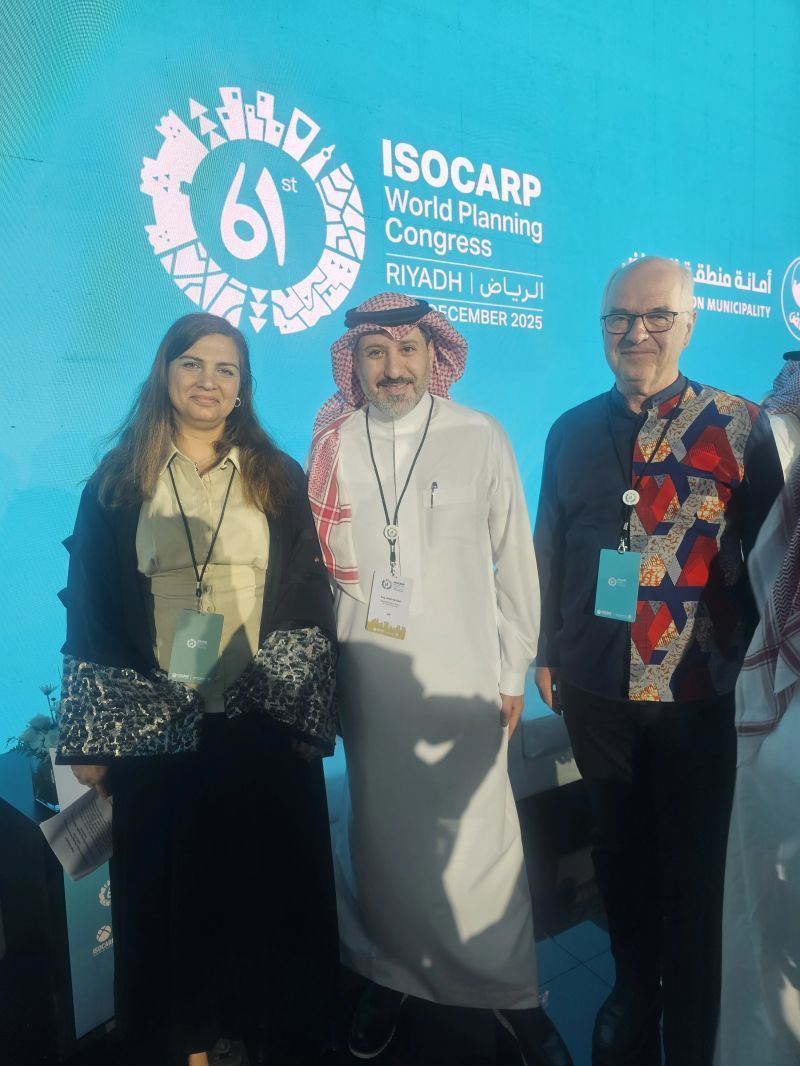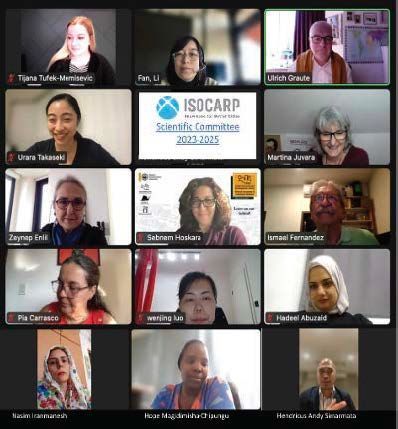Failure to plan is planning to fail – Post 1: The importance of vision
A plan is a baseline giving orientation and the vision and strategy are among the most consequential elements of planning. Of course, in life nothing goes according to plan. However, without such a baseline where do we start and how do we improve? Therefore, Benjamin Franklin coined the phrase “Failure to plan is planning to fail”. This blog post in two parts does not repeat the broad literature on urban and territorial planning respectively on national development planning. Written during the Corona pandemic and in anticipation of other crises to follow the two parts feature two of common but most consequential deficits (lack of vision and lack of strategy) and how to overcome them.
Failure to plan is planning to fail
Post 1: The importance of vision

The Vision of the United Nations:
Preamble of the Charter of the United Nations
WE THE PEOPLES OF THE UNITED NATIONS DETERMINED
- to save succeeding generations from the scourge of war, which twice in our lifetime has brought untold sorrow to mankind, and
- to reaffirm faith in fundamental human rights, in the dignity and worth of the human person, in the equal rights of men and women and of nations large and small, and
- to establish conditions under which justice and respect for the obligations arising from treaties and other sources of international law can be maintained, and
- to promote social progress and better standards of life in larger freedom,
AND FOR THESE ENDS
- to practice tolerance and live together in peace with one another as good neighbours, and
- to unite our strength to maintain international peace and security, and
- to ensure, by the acceptance of principles and the institution of methods, that armed force shall not be used, save in the common interest, and
- to employ international machinery for the promotion of the economic and social advancement of all peoples,
HAVE RESOLVED TO COMBINE OUR EFFORTS TO ACCOMPLISH THESE AIMS
Accordingly, our respective Governments, through representatives assembled in the city of San Francisco, who have exhibited their full powers found to be in good and due form, have agreed to the present Charter of the United Nations and do hereby establish an international organization to be known as the United Nations.
Source: UN Charter https://www.un.org/en/charter-united-nations/ - accessed on 18 February 2021
What happens if you skip the vision? I remember a project were mayors and representatives from academia envisioned a joint network. They took it easy and didn’t bother specifying their expectations. Well, after approval of the project it went into a year of crisis because it turned out that they had different ideas about the purpose of the network: Cities thought more about the ‘net’ and that they would like to meet once or twice a year for exchange. Representatives of academia thought more about ‘work’ and that they hoped for an intensive and on-going exchange of data and information as basis of research work. The missing of a joined vision for their network almost killed the project right from the beginning. So, be it a small or large project it’s always better to take the time to develop a vision and use it as the common basis for developing a policy, programme or project.
The need for a vision as narrative of our future
The charter of the UN is still valid and inspiring. However, the world is currently facing a series of crises which the founders of the UN didn’t have in mind in 1945. Today, governance models and approaches of the UN and other international, national and local level are struggling to adapt to emerging challenges. At the same time the resources of our common earth are exploited. It will be necessary to establish a new development model that meets the needs of the present without compromising the ability of future generations to meet their own needs. Yes, yes, that’s the old message of the 1987 Brundtland report ´Our Common Future’. It is still true but, unfortunately, we still not living up to it.
The 2030 Agenda of the UN as adopted by the member states in September 2015 is ambitious in its title ‘Transforming our world: the 2030 Agenda for Sustainable Development’. However, it has no clear vision in addition to that of the UN Charter. Instead, the 2030 Agenda presents itself as “a plan of action for people planet and prosperity”. Here is a problem: If you aim for nothing less than a ‘transformation of our world’ you need a vision as a narrative of that transformed world. Without that one gets what we currently face: UN, member states and many other stakeholders feel committed to implement the 2030 Agenda but at the same time they struggle to link the action plan adopted in 2015 with the dynamic situation in 2021. And this is because there is no common mental picture of our future which could guide us.
Well, we are living in a technology driven world where computer algorithms know more and more about us and have a growing impact on what we want. In addition, the UN is very keen on formulating targets, indicators for Agenda implementation and puts a strong focus on data collection monitoring. Therefore, one may wonder if computer wouldn’t be better than humans in writing the narrative of our future? No, in distinction to what could be delivered by a set of Algorithm Overlords of the Artificial Intelligence of our computers “we will need a new and compelling narrative of our future, based on an ethical vision of what human beings are and how they should live together. Such a vision, founded as it must be in our moral intuition, is one that only a human can offer or comprehend.”[1]
[1] David Mattin (2020): Designs for Life. In: Matthias Schrader, Volker Martens (Eds.): The Great Redesign. Frameworks for the Future. Hamburg, pp 38-46.
The silence of the lockdown a chance to reflect on the narrative for our future
Midway upon the journey of our life
I found myself within a forest dark,
For the straightforward pathway had been lost.
Dante Alighieri, Devine Comedy (Inferno, Canto 1)
While the world is in lockdown it seems to be calm and quiet. Looking deeper, the ice under the lockdown is thin and below it's neither calm nor quiet. Instead, the world is in turmoil. The pandemic is developing mutants; the economic and social costs are growing every day. In the meantime, the climate crisis and numerous other natural and man-made disasters are waiting to get our full attention. And the 2030 Agenda for Sustainable Development is off track. To summarize the current deplorable situation of the earth let me just refer to one person who should know. United Nations Secretary-General António Guterres, says everything in his Nelson Mandela Lecture of 18 July 2020 “Tackling the Inequality Pandemic: A New Social Contract for a New Era” [1]. Everything? Well, the Secretary General doesn't speak about own shortcomings of the UN.[2] However, apart from this partial blindness Guterres' speech is an excellent lecture calling for a great redesign in form of a New Social Contract.
[1] https://www.un.org/sg/en/content/sg/statement/2020-07-18/secretary-generals-nelson-mandela-lecture-%E2%80%9Ctackling-the-inequality-pandemic-new-social-contract-for-new-era%E2%80%9D-delivered - accessed on 10 February 2021
[2] Aargauer Zeitung on 10 February 2021: http://ow.ly/9MzN50DwSqe
„More Trouble“: Two scientists look at the Corona development curve („flatten the curve“). What they don't see is the even higher and bigger curve of climate change
Source: Statistically Insignificant www.instagram.com/statisticallycartoon/
After the pandemic “back to normal", a "new normal" or a "never new normal"
Many just hope to return to the "normality" as it was known before Corona. Others look at the deplorable situation as described e.g. by Mr Guterres and call for a "build back better" and a “new normal”. Again, others take a step further and imagine a "new never normal". For instance, Matthias Schrader doesn't see behind the pandemic a new status quo. Instead he sees a continued development process. In his preface to the book The Great Redesign[1] he writes:
"I wish you courage in redesigning the "new never normal", and an eye for the big picture. Because real change requires staying power. Entrepreneurial short-sightedness does not help us. Normally the initial idea is not followed immediately by success but rather by a longer period of patient trial and error and constant improvement to carry through and establish innovation. Stay tuned. It could be great."
Of course, even the normality before the pandemic was marked by innovations and a more or less gradual transformation. To be challenged is good but at the same time the scenario of a “new never normal” is scary. Humans need normality for a balanced life. I doubt that humanity could adapt to a permanent “never new normal” if that would come close to a prolonged chaos. Therefore, a new normal deems preferable but there is no narrative for it yet. And here is the link to the subject of the post: Without a vision or narrative of our future we cannot develop a plan.
Call for a vision as narrative of our future
Dear reader, please use some of your time (in or out of lockdown) to think about what could be a compelling narrative of our future on which we all could agree regardless of political beliefs, religion, race, sex or ethnicity. Please, look also at existing visions. They are not necessarily bad but do they provide a full or only a partial narrative of our future. What’s missing? What should be added?
Everybody could write down or contribute to the vision as a mental model of our future. You might be a monk in a closure, a political leader, a staff member silenced by the conditions of a country or institution or you may be free to follow your own interests only. What matters is your creativity and imagination to produce a compelling narrative of our future as a vision to which everybody can commit. And imagine, with your narrative of our future you might win the Peace or Literature Nobel Prize one day.
Of course, for that vision it will require a strategy to implement it (see part 2 of the blog post).
[1] Matthias Schrader (2020): Redesigning the "New Never Normal". In: Matthias Schrader and Volker Martens (Eds.): The Great Redesign. Frameworks for the Future. Hamburg, pp 9-11.
________
If you have any questions, comments or a request for advisory services please contact Ulrich Graute via ulrich.graute@ugraute.de
All posts on the subject Failure to plan is planning to fail will be available on the blog “With burning patience”: https://www.ugraute.de/blog-1
Policies and Governance for Resilient and Sustainable Cities and Regions










